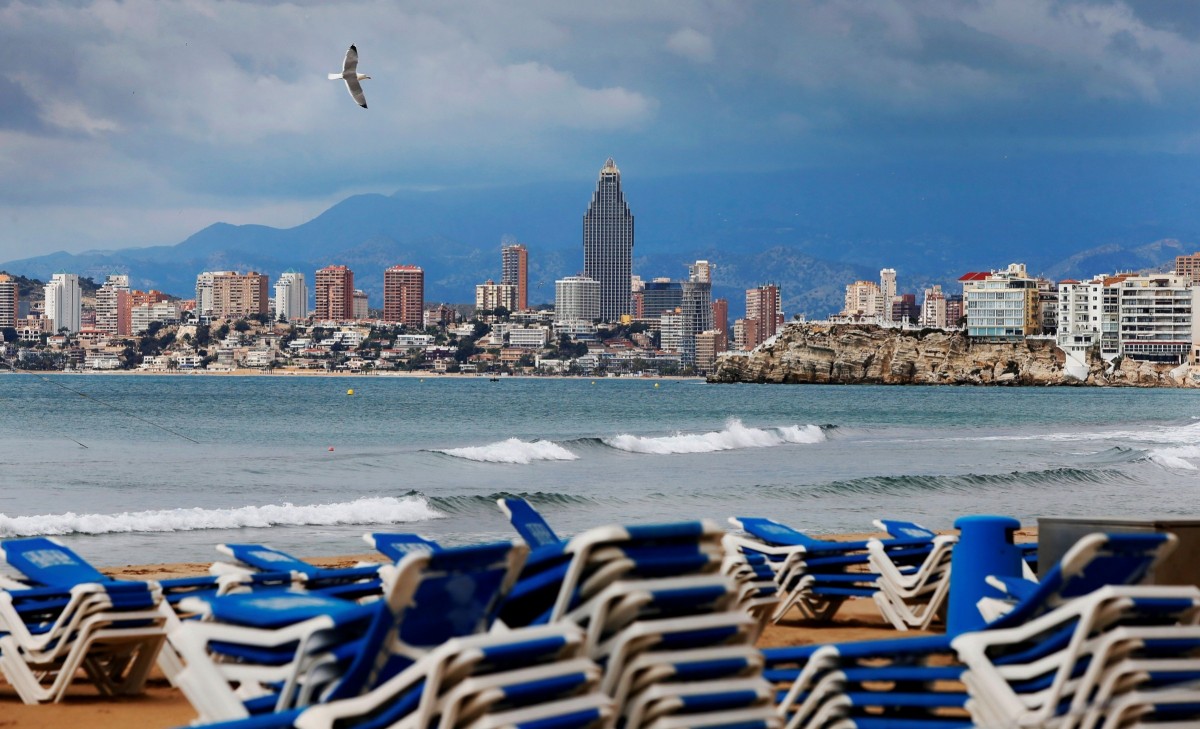Eurozone: Better, But The Fear Factor Remains
After the historic GDP contraction in 2Q, Eurozone economic figures have improved, though the flare-up of Covid-19 infections has placed a burden on the recovery.

Source: Shutterstock A view of a deserted beach in Benidorm, Spain, one of Spain's hotspots for tourism.
Historic GDP contraction
So we now have official figures that we can in the future refer to as the worst in history.
In the second quarter of 2020, Eurozone GDP contracted by 12.1%, with Spain even printing an 18.5% contraction. The good news is that as lockdown measures are eased, the European Commission’s economic sentiment indicator has now risen three months in a row, with July’s 87 point level firmly above the second quarter’s average of 71.1.
We maintain our -8.0% GDP forecast for this year, while slightly lifting our 2021 outlook to 4.8%
While for the third quarter, the v-shaped recovery is still in place, the flaring up of Covid-19 infections clearly signals that until an effective vaccine is available, life will not return to normal.
The disappointing Spanish tourism season shows how vulnerable a great number of service sectors remain to the pandemic’s vagaries. The health risk and targeted confinement measures are keeping consumers hesitant, leading to a higher propensity to save. On the plus side, the European Union has now decided on a recovery fund, which will provide about 0.8% of GDP fiscal stimulus, both in 2021 and 2022. We maintain our -8.0% GDP forecast for this year, while slightly lifting our 2021 outlook to 4.8%.
Inflation quirk
Notwithstanding the VAT rate cut in Germany, eurozone core inflation actually increased from 0.8% to 1.2% in July.
However, this is probably a statistical quirk, since the sales period has been delayed until August in a number of countries, rendering the year-on-year comparison less favorable in July. That said, 2021 could see somewhat higher inflation as the German VAT rate will increase again and energy price inflation becomes positive.
But even then, we are only penciling in 1.4% headline inflation.
Euro trouble
Meanwhile, the euro’s effective exchange rate has gained around 6% since February and it is not that far away from an all-time high.
While it might be too soon for the European Central Bank to counteract, it is definitely a factor that will contribute to low inflation, soliciting dovish comments from the ECB. And even if the tightening of spreads on sovereign bond yields could incite the central bank to slow down its bond purchases, the stronger common currency leads us to believe that an additional €400bn of PEPP (Pandemic Emergency Purchase Programme) remains feasible.
Disclaimer: This publication has been prepared by ING solely for information purposes irrespective of a particular user's means, financial situation or investment objectives. The information ...
more


